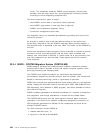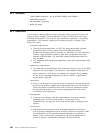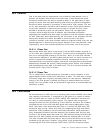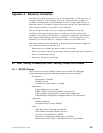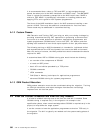
about the same after switchover, with MVS showing a couple of percentage
points higher.
Since the workload at this installation is not the typical online on prime shift and
batch on second and third, it was not as easy to make comparisons on a batch
window length. Overall it appeared that throughput was much better. There were
other performance benefits realized. A good example was a large database that
affected VSE performance could only be reorganized (to improve performance)
on holiday weekends because of the many hours it took to perform the
reorganization. Under MVS this reorganization time was cut by two thirds
allowing this function to be performed on a more regular basis. This reduction in
time was attributed to the better throughput of MVS and in the internal design of
the MVS version of the ISV database manager.
34.7 Benefits
Other than the performance benefits mentioned above there were many other
benefits realized by going to MVS. As new business comes along MVS is able to
absorb the workload without many of the problems previously encountered by
the I/S staff when they had to try to ″fit″ this into the VSE environment. Examples
of this are the ability to connect new NJE customers to one line using SNI as
opposed to multidrop lines for 3270 access and a point to point bisync NJE line.
When new business dictated more DASD, there was flexibility to go with the
latest RVA DASD and not worry about operating system support issues. There is
also the flexibility to grow the processor horizontally or vertically, which ever is
more cost effective or quickest in order to take on new business. Even more
important in this high availability environment where unscheduled VSE IPLs were
frequent, MVS has run over a year without an unscheduled IPL.
532 VSE to OS/390 Migration Workbook



